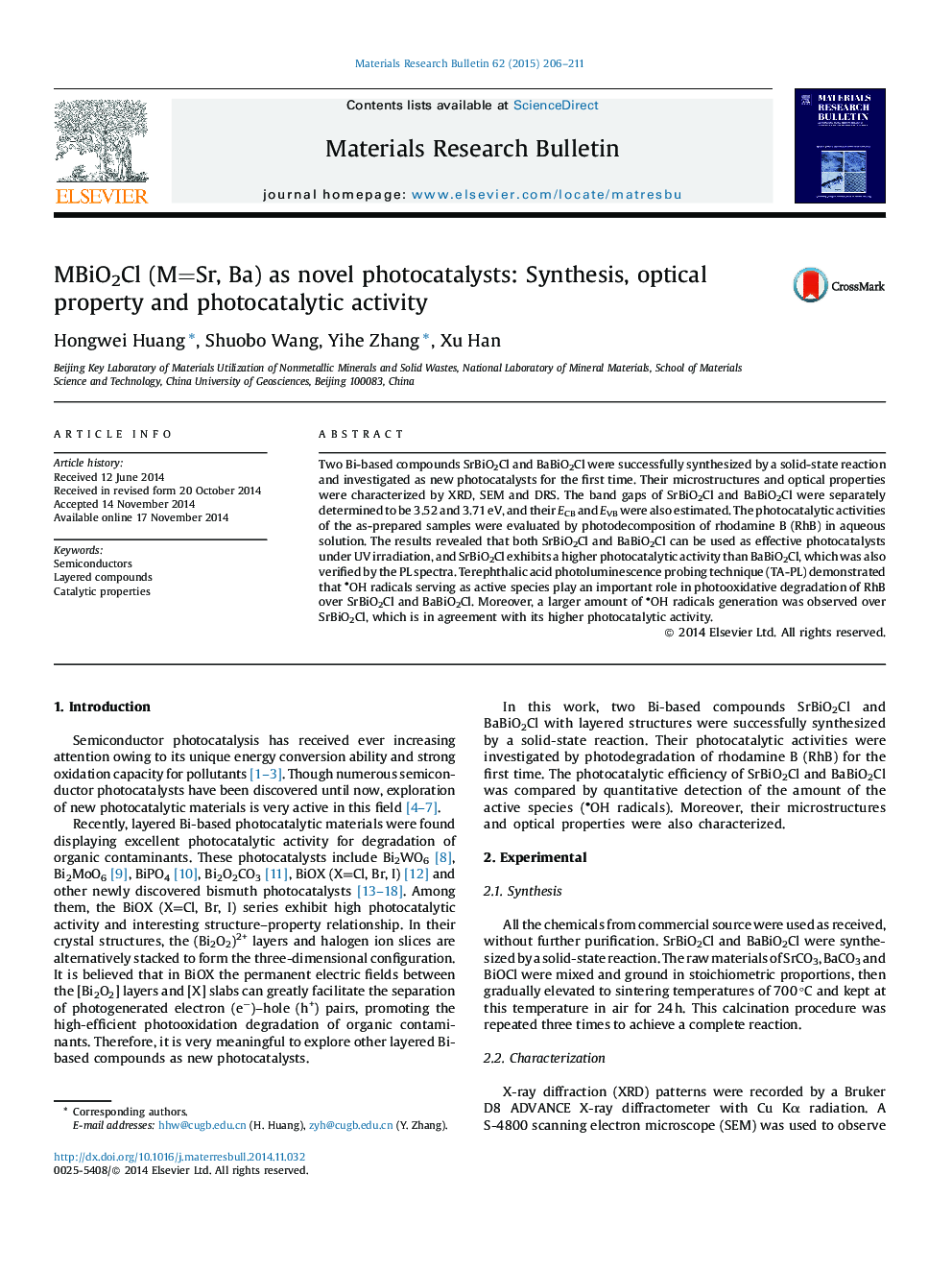| Article ID | Journal | Published Year | Pages | File Type |
|---|---|---|---|---|
| 1487656 | Materials Research Bulletin | 2015 | 6 Pages |
•Two Bi-based compounds SrBiO2Cl and BaBiO2Cl were explored as photocatalysts.•They were successfully synthesized by a solid-state reaction.•RhB can be effectively photodecomposed by SrBiO2Cl and BaBiO2Cl under UV light.•OH radicals serving as active species play important roles in degradation process.
Two Bi-based compounds SrBiO2Cl and BaBiO2Cl were successfully synthesized by a solid-state reaction and investigated as new photocatalysts for the first time. Their microstructures and optical properties were characterized by XRD, SEM and DRS. The band gaps of SrBiO2Cl and BaBiO2Cl were separately determined to be 3.52 and 3.71 eV, and their ECB and EVB were also estimated. The photocatalytic activities of the as-prepared samples were evaluated by photodecomposition of rhodamine B (RhB) in aqueous solution. The results revealed that both SrBiO2Cl and BaBiO2Cl can be used as effective photocatalysts under UV irradiation, and SrBiO2Cl exhibits a higher photocatalytic activity than BaBiO2Cl, which was also verified by the PL spectra. Terephthalic acid photoluminescence probing technique (TA-PL) demonstrated that OH radicals serving as active species play an important role in photooxidative degradation of RhB over SrBiO2Cl and BaBiO2Cl. Moreover, a larger amount of OH radicals generation was observed over SrBiO2Cl, which is in agreement with its higher photocatalytic activity.
Graphical abstractFigure optionsDownload full-size imageDownload as PowerPoint slideNovel quaternary photocatalysts MBiO2Cl (MSr, Ba) have been successfully developed for efficient photodecomposition of RhB. Their photocatalytic mechanism was also investigated.
